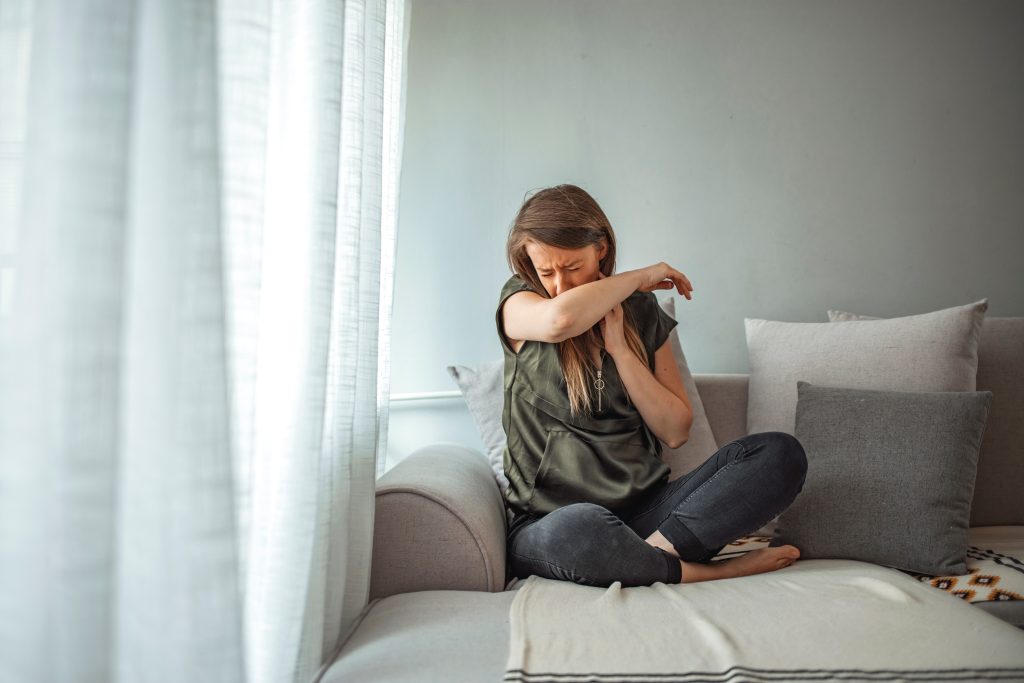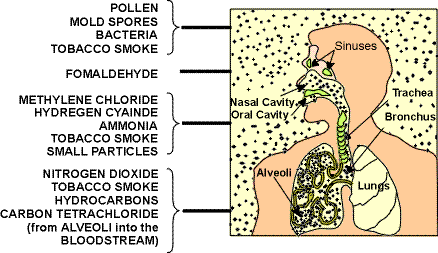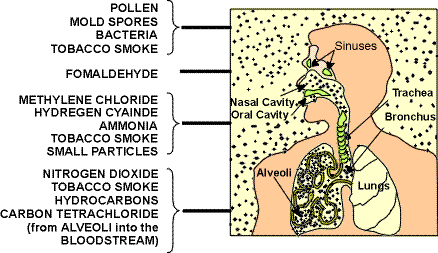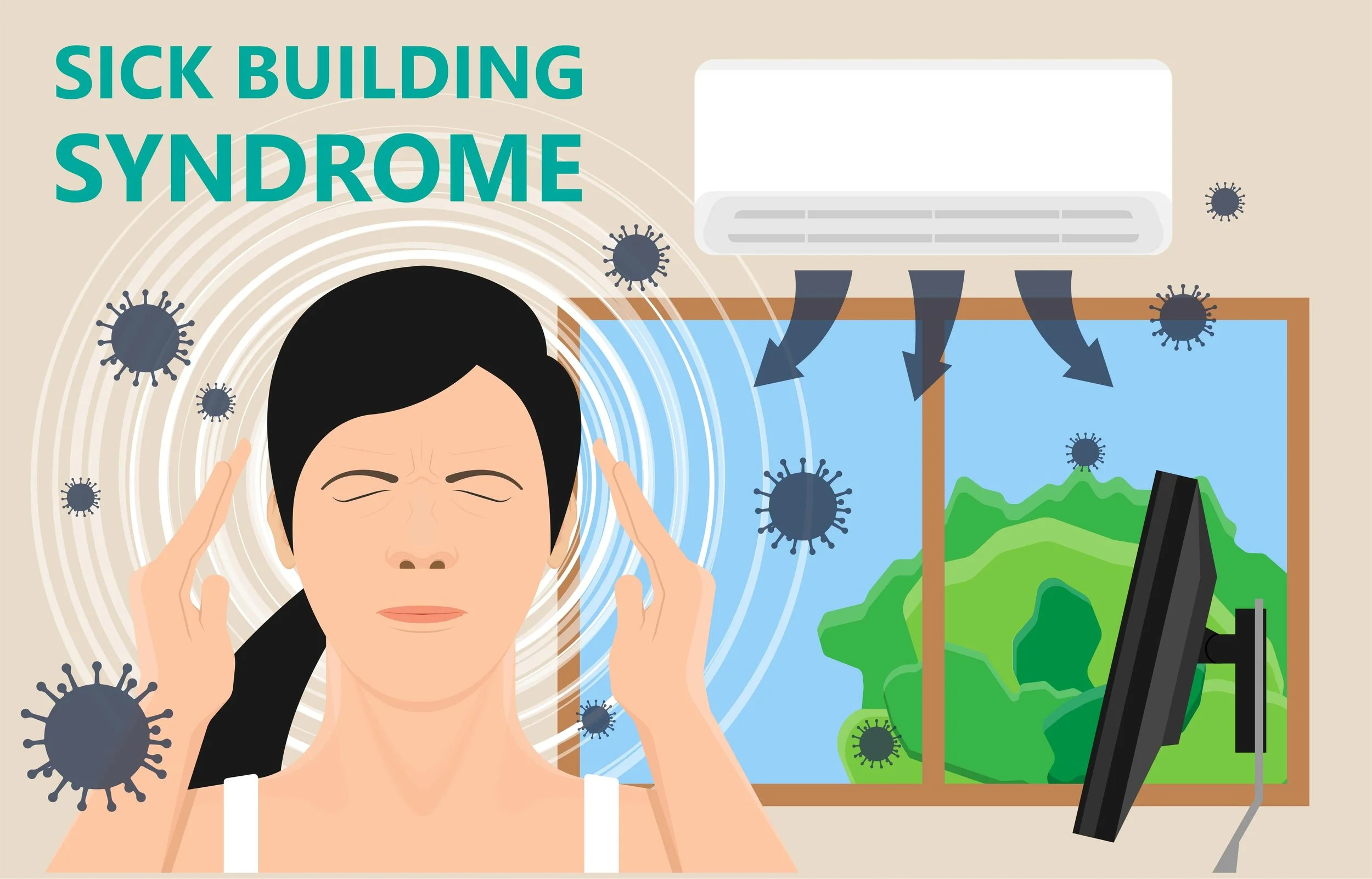You may be familiar with Sick Building Syndrome (SBS) if you’ve ever had symptoms like headaches, exhaustion, or respiratory problems when indoors. SBS, as its name suggests, refers to a variety of health issues that can develop after spending time in particular structures. The usage of air purifiers has been mentioned as a potential option. But do they actually aid in symptom reduction? In this post, we’ll look more closely at how air purifiers might help prevent sick buildings syndrome and enhance indoor air quality.

What is Sick Building Syndrome?
Defining Sick Building Syndrome
The term “Sick Building Syndrome” (SBS) describes a condition in which people encounter a variety of health problems and discomfort while residing in a certain structure or enclosed area. Once people leave the building, these symptoms usually get better or go away. People can experience SBS in a variety of indoor situations, including homes, workplaces, schools, and other indoor settings.
Causes of Sick Building Syndrome
Sick Building Syndrome’s precise causes are not entirely understood, however a number of elements have been suggested as potential offenders. SBS may develop as a result of poor indoor air quality, insufficient ventilation, chemical and biological pollutants, as well as specific building materials and furnishings. Additionally, people who already have SBS symptoms may experience worsening of their symptoms if there is a high amount of indoor air pollution, such as particulate matter and volatile organic compounds (VOCs).
Common Symptoms of Sick Building Syndrome
Numerous symptoms can appear as a result of sick building syndrome. These signs can differ from person to person, but frequently consist of:
- General discomfort, fatigue, and malaise
- Headaches and dizziness
- Eye, nose, and throat irritation
- Congestion and respiratory problems
- Skin rashes and allergies
- Cognitive difficulties and poor concentration
- Nausea and digestive issues
It is significant to remember that these symptoms may pass quickly or linger for some time. It may be worthwhile to investigate Sick Building Syndrome if you regularly encounter these symptoms while residing in a particular structure.
Understanding Air Purifiers
How Air Purifiers Work
Air purifiers are tools created to enhance the quality of the air inside a building by removing various pollutants and toxins. Filters and other technologies are often used to catch particles and neutralize dangerous compounds. The air purifier pulls in the outside air and filters it before releasing cleaner air back into the space.
Types of Air Purifiers
There are various different types of air purifiers on the market, each with a different way of working:
- High-Efficiency Particulate Air (HEPA) Filters: These purifiers use HEPA filters to trap 99.97% of particles as small as 0.3 microns, including pollen, dust mites, pet dander, and smoke.
- Activated Carbon Filters: These filters contain absorbent carbon granules that can effectively remove odors, gases, and chemicals from the air.
- UV Germicidal Irradiation (UVGI): Air purifiers with UVGI technology utilize ultraviolet light to neutralize and kill bacteria, viruses, and other microorganisms.
- Electrostatic Precipitators: This type of purifier uses an electric charge to capture particles, which are then attracted to oppositely charged metal plates.
Benefits of Air Purifiers
When it comes to enhancing indoor air quality and minimizing the signs of Sick Building Syndrome, air purifiers provide a number of advantages:
- Removal of airborne allergens: Air purifiers can effectively capture and remove common allergens like pollen, dust mites, and pet dander, providing relief to individuals with allergies or asthma.
- Reduction of volatile organic compounds (VOCs): VOCs are gases emitted by certain products, such as paints, cleaning agents, and furniture. Air purifiers with activated carbon filters can help to reduce the levels of these harmful substances in the air.
- Odor elimination: Air purifiers equipped with activated carbon filters can eliminate unpleasant odors caused by pets, cooking, or other sources, keeping the indoor environment fresh and inviting.
- Enhanced respiratory health: By removing airborne particles and pollutants, air purifiers can reduce the risk of respiratory issues and promote better lung health, especially for vulnerable individuals like children and the elderly.
The Role of Air Purifiers in Reducing Symptoms of Sick Building Syndrome
Improving Indoor Air Quality
Improving indoor air quality is one of the main ways air purifiers can benefit people with Sick Building Syndrome. Air purifiers function to make the environment cleaner and healthier by continuously filtering the air and removing contaminants and allergens. The symptoms may lessen as a result of the cleaner air, making people feel more comfortable and easing respiratory problems brought on by poor air quality.
Filtering Out Contaminants
Air cleaners are effective at removing pollutants that might be in buildings and cause Sick Building Syndrome. Dust, mold spores, germs, and viruses are only a few examples of these pollutants. Air purifiers can efficiently catch and remove these dangerous particles from the air with the right filtration system, thereby lowering the total amount of toxins in the indoor environment.
Reducing Allergens and Irritants
Many Sick Building Syndrome sufferers have heightened sensitivity to airborne allergens and irritants. By catching and getting rid of allergens like dust mites, pet dander, and pollen, air purifiers with HEPA filters can help with symptoms. Air purifiers can considerably enhance the comfort and wellbeing of persons who are afflicted by Sick Building Syndrome by lowering exposure to these triggers.
Effectiveness of Air Purifiers for Sick Building Syndrome
Research Studies on Air Purifiers
The usefulness of air purifiers in easing Sick Building Syndrome symptoms has been examined in a number of studies. These studies have repeatedly demonstrated that the use of air purifiers can enhance indoor air quality and lessen people’s symptoms.
One study found that using air purifiers with HEPA filters significantly reduced symptoms like headaches, eye irritation, and congestion among workers in office buildings plagued by Sick Building Syndrome. This study was published in the Journal of Environmental and Public Health.
Case Studies and Testimonials
Numerous case studies and testimonies, in addition to academic studies, offer anecdotal proof of the beneficial effects air purifiers can have on people with Sick Building Syndrome. Many people who have used air purifiers in their homes or places of employment have noted a discernible improvement in their general health and symptoms.
Expert Opinions and Recommendations
Air purifiers are frequently suggested by specialists in the field of indoor air quality as part of an all-encompassing plan to combat Sick Building Syndrome. To ensure the highest level of effectiveness in removing indoor pollutants, they emphasize the significance of choosing air purifiers with the right filtration technology, such as HEPA filters. Before selecting an air purifier, specialists in the field advise talking to individuals and taking their demands into account.

Choosing the Right Air Purifier for Sick Building Syndrome
Considerations for Air Purifier Selection
There are numerous crucial things to take into account when choosing an air purifier to aid in the treatment of Sick Building Syndrome:
- Room size: Consider the size of the room or area where the air purifier will be used. Ensuring the purifier is appropriately sized for the space is crucial for optimal performance.
- Air changes per hour (ACH): Look for air purifiers that offer a higher ACH rating, as this indicates how many times the device can filter the entire volume of air in the room within an hour.
- Filtration system: Consider the type of filtration system that best suits your needs. If allergens are a primary concern, an air purifier with a HEPA filter is recommended. For individuals sensitive to odors or chemicals, an air purifier with activated carbon filters may be more suitable.
Key Features to Look for
When shopping for an air purifier to combat Sick Building Syndrome, certain features can enhance its performance and convenience:
- Multiple fan speeds: The ability to adjust fan speeds allows for customization based on the severity of symptoms or the room’s air quality.
- Automatic sensors: Air purifiers equipped with sensors can detect changes in air quality and adjust their performance accordingly, ensuring continuous filtration when needed.
- Noise level: Consider the noise level of the purifier, especially if it will be used in a bedroom or work environment where excessive noise can be disruptive.
Size and Coverage
For maximum efficacy, selecting an air purifier with the proper size and coverage for the intended area is essential. An air purifier’s effective square footage is normally specified by the manufacturer. To make sure that all of the air in the room is being effectively filtered, it is crucial to choose a purifier with enough coverage.
Additional Strategies for Dealing with Sick Building Syndrome
Improving Ventilation
The symptoms of Sick Building Syndrome can be significantly reduced by employing air purifiers as well as enhancing ventilation in buildings. Heating, ventilation, and air conditioning (HVAC) systems can help to improve the supply of fresh air and assure the removal of stale or dirty air by properly operating and maintaining them. Improved interior air quality can also result from utilizing fans, opening windows, and natural ventilation techniques.
Reducing Chemical Exposure
Many household, cleaning, and building supplies can emit harmful chemicals and VOCs into the air, aggravating Sick Building Syndrome sufferers’ symptoms. By using natural cleaning solutions, low-emission or eco-friendly building materials, and sufficient ventilation when working with potentially toxic compounds, it is possible to reduce exposure to these chemicals.
Maintaining a Clean Environment
Dusting and vacuuming frequently can help prevent the accumulation of allergies and pollutants in the indoor environment. To properly remove dust, pet dander, and other pollutants from surfaces and fabrics, use the right cleaning techniques and supplies. Maintaining adequate humidity levels can also stop mold and other allergies from growing.

Potential Limitations and Drawbacks of Air Purifiers
Certain Pollutants May Not Be Filtered
While many airborne contaminants can be captured and removed by air purifiers, other pollutants may not be sufficiently filtered. These can include volatile organic compounds (VOCs) and gases such as carbon monoxide and radon. To maximize the efficiency of air purifiers, it is crucial to address the underlying causes of these pollutants and get rid of them from the indoor environment.
Maintenance and Cost Considerations
To ensure optimal operation, air purifiers require routine maintenance. This involves changing filters as directed by the manufacturer and doing routine filter cleaning. As part of continuing maintenance costs, filter replacement costs should also be considered.
Impact on Energy Efficiency
Continuously running an air purifier can result in greater energy use and possibly higher electricity costs. While choosing an ENERGY STAR certified device can assist reduce energy usage without sacrificing performance, many contemporary air purifiers are built to be energy-efficient.
Tips for Using Air Purifiers Effectively
Proper Placement of the Air Purifier
It’s crucial to properly position an air purifier in the room to maximize its efficiency. Better air circulation and filtration are made possible by positioning the purifier in the middle of the room, away from impediments. Place the purifier far from any walls, pieces of furniture, or other obstructions that can restrict airflow.
Regular Cleaning and Filter Replacement
The air purifier must be cleaned and maintained on a regular basis to remain in top condition. When cleaning the appliance, make sure to follow the manufacturer’s directions and to change the filters frequently. Maintenance neglect can lead to decreased effectiveness and weakened air purifying capabilities.
Optimal Duration of Use
It is typically advised to leave the air purifier running nonstop in order to maintain the best possible interior air quality. This makes sure that the air is always being filtered, which is important if people spend a lot of time in the impacted building. Nevertheless, depending on personal needs and preferences, it might be more cost-effective to run the air purifier selectively in some areas of the building or at particular times.
1. Conclusion
People who spend time in impacted buildings can suffer considerable effects from Sick Building Syndrome with regard to their comfort and general well-being. Air purifiers are an excellent way to improve indoor air quality and lessen symptoms. Air purifiers can help people with Sick Building Syndrome live in a healthier and more comfortable environment by successfully removing allergens and toxins from the air. Air purifiers can be extremely helpful in minimizing the negative impacts of Sick Building Syndrome when used in conjunction with other tactics like increasing airflow and minimizing chemical exposure.
2. References
- Abdullahi KL, Adamu H, Abubakar IS. Pulmonary function impairments among air-conditioned building occupants: sickness building syndrome. Journal of Environmental and Public Health. 2019;2019:7801795. DOI: 10.1155/2019/7801795.
- Environmental Protection Agency. Indoor Air Quality. Retrieved from: https://www.epa.gov/indoor-air-quality-iaq.
- National Institute for Occupational Safety and Health. Sick Building Syndrome and Building Factors. Retrieved from: https://www.cdc.gov/niosh/topics/indoorenv/sickbuilding.html.
- World Health Organization. WHO Guidelines for Indoor Air Quality: Selected Pollutants. Retrieved from: http://www.euro.who.int/__data/assets/pdf_file/0009/128169/e94535.pdf.

Recommendations: MOOKA Air Purifier review


